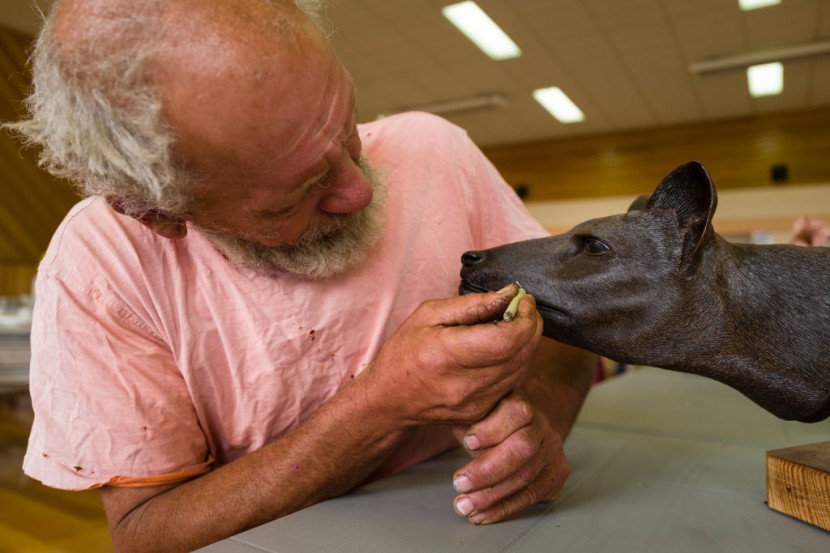
(Photo: by Heath Holden/Getty Images) MIENA, AUSTRALIA - JANUARY 23: Local resident and artist Dave Hurst has evacuated his home at the Great Lake, bringing his hobbies and work to the community center, he is working on a wax carving of a Thylacine head on January 23, 2019, in Miena, Australia. Firefighters continue to battle a number of blazes across Tasmania with hot, windy weather forecast for the rest of the week. The Tasmanian Fire Service confirmed one property had been destroyed near the town of Miena on Tuesday night.
For the first time, RNA molecules from an extinct organism have been extracted and deciphered by geneticists.
Scientists can now better understand how an animal's genes function thanks to genetic material taken from a 130-year-old Tasmanian tiger, or thylacine, specimen in the Swedish Museum of Natural History's collection.
In a study that was published on Tuesday in the scholarly journal Genome Research, the researchers presented their findings, as reported by CNN.
The thylacine was a marsupial predator that was about the size of a coyote. Except for Tasmania, an island state in Australia, where the population was hunted to extinction by European settlers, it virtually disappeared around 2,000 years ago. At the Beaumaris Zoo in Hobart, Tasmania, Benjamin, the last thylacine in captivity, perished from exposure in 1936.
Can It Bring Back the Animal?
While de-extinction was not the aim of Mármol Sánchez's team's research, he did claim that a greater knowledge of the genetics of the Tasmanian tiger could aid newly begun initiatives to bring the animal back in some form.
The paper, according to Andrew Pask, who is in charge of an effort to bring back the thylacine, was "groundbreaking."
Ancient DNA has completely changed how scientists think about the past and can persist for more than a million years in the appropriate circumstances.
Since RNA is a temporary replica of a piece of DNA and degrades more quickly than DNA, it was previously believed that it would not last for very long.
The most recent study is the first to recover RNA from an extinct animal, but RNA from a 14,300-year-old wolf's skin that was frozen in permafrost was sequenced in 2019.
Read also: DNA, Origins of Life: Hot Start to Life Described as 'Cosmic Barbeque' by Astronomers
A Proof-of-Concept
This discovery, according to Mármol Sánchez, is a proof-of-concept, and his team is now hoping to recover RNA from species that went extinct a long time ago, like the woolly mammoth.
The study team was able to discover thylacine-specific genes by sequencing the RNA of the epidermis and skeletal muscle tissues from the material. Similar to how information stored in DNA is referred to as a genome, this information is a component of the animal's transcriptome.
Each cell in the body has DNA, which is frequently referred to as the life's guidebook. In the transcription process, which is also responsible for other cellular processes, RNA makes proteins by making a copy of a certain DNA stretch.
According to Mármol Sánchez, an understanding of RNA enables researchers to construct a more thorough picture of an animal's biology.
He compares it to a city where every restaurant has access to the DNA, a massive recipe book. However, RNA is what enables each restaurant to create unique recipes using that recipe book.
Related article: Is the Secret to Everlasting Youth A Dormant Gene Called Lin28a?








